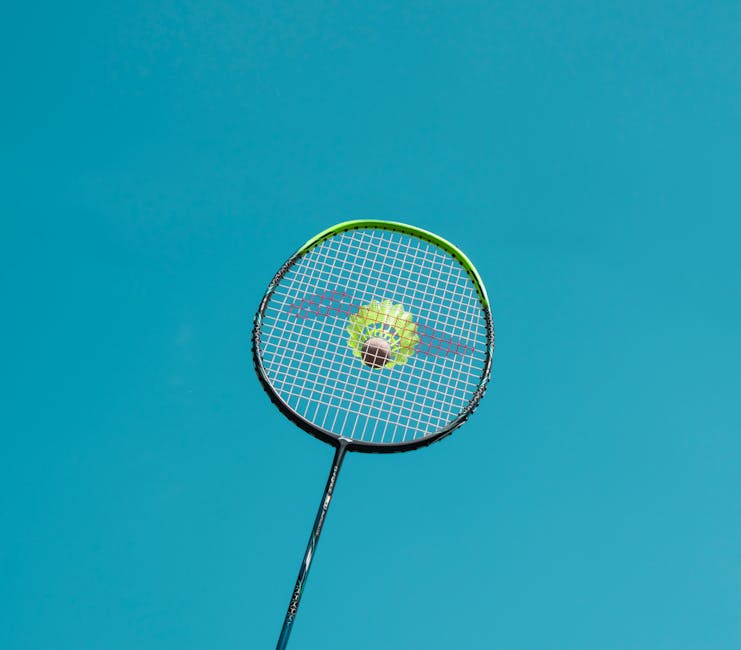How to String a Badminton Racket Like a Pro 🏸
Badminton is a sport that perfectly balances finesse and power. Whether you’re a seasoned player or a beginner, having a well-strung racket is crucial for optimal performance. Stringing your racket like a pro not only enhances your game but also extends the life of your equipment. In this guide, we’ll walk you through the step-by-step process of stringing a badminton racket like a professional.
Table of Contents
1. Understanding the Basics of Badminton Strings 🎾
2. Tools You’ll Need 🛠️
3. Step-by-Step Guide to Stringing Your Racket 📋
4. Tips for Maintaining Your Racket Strings 🧼
5. Conclusion: Mastering the Art of Stringing 🎯
6. FAQs 🤔
Understanding the Basics of Badminton Strings 🎾
Before diving into the stringing process, it’s essential to understand the different types of strings and their impact on performance. Badminton strings vary in thickness, material, and tension, each affecting your playstyle uniquely.
1. **String Thickness:** Thicker strings (0.70 mm and above) are durable but may compromise feel and control. Thinner strings (0.65 mm and below) offer better control and feel but may not last as long.
2. **Material:** Synthetic gut, multifilament, and natural gut are common materials. Natural gut offers superior performance but is more expensive.
3. **Tension:** Higher tension (24-30 lbs) provides more control and power for advanced players, while lower tension (18-23 lbs) offers more comfort and is forgiving on the arm, suitable for beginners.
Tools You’ll Need 🛠️
To string a badminton racket effectively, you’ll need the right tools. Here’s a list to get you started:
– Stringing machine (manual or electronic)
– Stringing clamps
– Awl
– Pliers
– Scissors
– Racket and string set
While it might be tempting to string your racket by hand, using a stringing machine ensures precision and consistency, which are key to a professional-level stringing job.
Step-by-Step Guide to Stringing Your Racket 📋
Now that you’re equipped with the right tools, let’s get into the process:
1. Preparing Your Racket 🎯
Before you start stringing, remove the old strings from your racket. Use pliers to cut the strings, ensuring you cut them in the center to release tension evenly. This prevents warping the frame.
2. Setting Up the Stringing Machine 🖇️
Secure your racket in the stringing machine. Ensure it’s well-positioned and stable to avoid any movement during stringing. Adjust the tension settings according to your preference.
3. Weaving the Mains 🌐
Start with the main strings. Pull the string through the center holes of the racket head, ensuring equal lengths on both sides. Use the clamps to hold the string in place, then weave through the holes toward the frame’s edge. Tighten each string as you go.
4. Inserting the Cross Strings ✨
Once the mains are done, start weaving the cross strings. Begin at the top of the racket and weave over and under the mains. Be consistent with your pattern to ensure even tension. Pull each string tightly and use clamps to secure them.
5. Final Adjustments 🔧
After installing all the strings, check for any loose areas and adjust as necessary. Trim the excess string and tie off the ends securely. Your racket should now have a neat and professional finish!
Tips for Maintaining Your Racket Strings 🧼
String maintenance is as important as the stringing process itself. Here are some tips to keep your strings in top shape:
– Store your racket in a cool, dry place to prevent moisture damage.
– Regularly check the string tension and replace them if they feel loose or frayed.
– Avoid over-tightening the strings, which can cause the frame to crack.
Conclusion: Mastering the Art of Stringing 🎯
Stringing a badminton racket like a pro might seem daunting at first, but with practice and patience, you’ll get the hang of it. Understanding the nuances of string types, tension, and maintenance can significantly enhance your game. So, grab your tools and start stringing!
FAQs 🤔
1. How often should I restring my badminton racket?
It depends on your playing frequency and style. Typically, if you play several times a week, restring every 3-4 months. Less frequent players can restring every 6-12 months.
2. What tension is best for beginners?
Beginners should start with a lower tension, around 18-23 lbs, to allow more forgiveness and comfort during play.
3. Can I string my racket without a machine?
While it’s possible to string manually, using a stringing machine ensures accuracy and consistency, making it highly recommended, especially for beginners.
4. What signs indicate I need to restring my racket?
Look for signs such as frayed strings, a noticeable drop in tension, or if you’re experiencing reduced performance during play.
5. How do I choose the right string thickness?
If you prefer durability, opt for a thicker string. For enhanced control and feel, go for a thinner string.
By following these guidelines and tips, you’ll be well on your way to stringing your badminton racket like a pro. Happy playing!
Top on Sale Badminton Racket Recommendation
